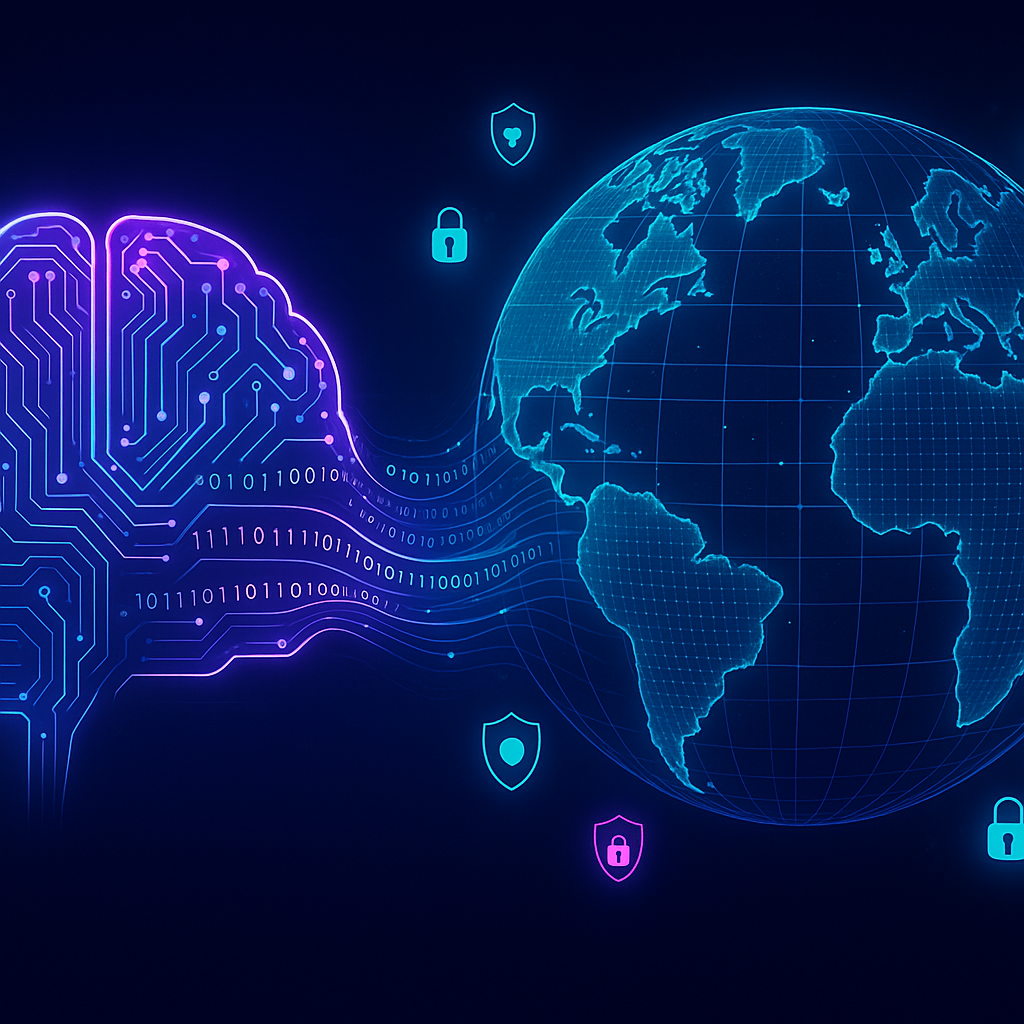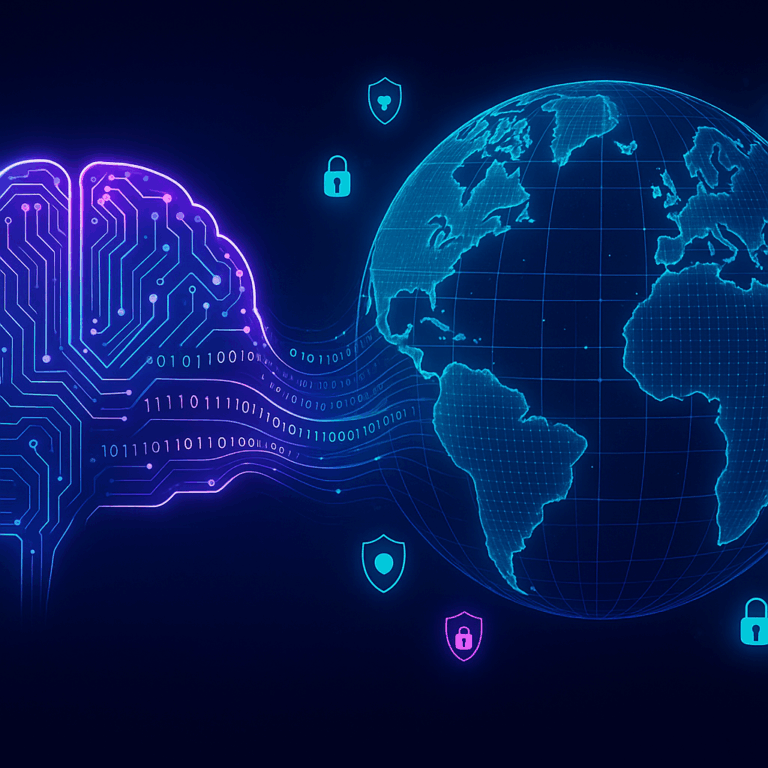“`html
AI Data Usage Brings New Cybersecurity Challenges and Implications
Imagine a world where AI isn’t just a tool, but a fundamental pillar in our daily decision-making processes. We are already living in that world! As organizations increasingly leverage artificial intelligence to process vast amounts of data, they find themselves standing at a crossroads. Sure, AI can transform businesses and predict trends with uncanny accuracy, but it also brings a myriad of cybersecurity challenges. Let’s unpack these intricacies and explore how cybersecurity can keep up with the pace of AI growth.
Understanding AI-Driven Threat Detection
Artificial intelligence has changed how we approach threat detection. With the amount of data flowing through networks every second, traditional cybersecurity measures often struggle to keep up. AI algorithms help by analyzing large datasets rapidly and spotting anomalies that could indicate cyber threats.
Key Features of AI-Driven Threat Detection:
- **Anomaly Detection:** AI models can be trained to recognize patterns and flag deviations in real-time.
- **Predictive Analysis:** Machine learning can forecast potential security breaches before they occur.
- **Behavioral Analytics:** These systems learn user habits, making it easier to detect unauthorized access attempts.
Despite these capabilities, AI systems themselves are not immune to threats. Adversarial attacks, where malicious inputs are crafted to deceive AI systems, remain a pressing concern. According to a study by MIT, many machine learning models are vulnerable to minor input perturbations, highlighting the importance of robust AI security protocols (Goodfellow et al., 2015).
Deploying Machine Learning Algorithms for Cybersecurity
Machine learning (ML) has been a game-changer in enhancing cybersecurity measures. From spam filtering to dynamic threat detection, the applications of ML are vast and varied. Let’s look into how ML contributes to cybersecurity:
Strategic Implementations of Machine Learning:
- **Intrusion Detection Systems (IDS):** ML algorithms power IDS to detect and respond to intrusions effectively.
- **Fraud Detection:** Banks and financial institutions use ML to identify fraudulent transactions swiftly.
- **Zero-Day Threats Detection:** ML can identify unknown threats by recognizing unusual behavioral patterns.
Nonetheless, integrating ML into security systems isn’t seamless. The need for labeled data for training, the challenge of algorithm bias, and the computational expense are barriers for some organizations. Google’s AI researchers have emphasized the need for explainable AI to increase trust in ML models and make data-driven decisions transparent (Doshi-Velez & Kim, 2017).
Securing Networks in the Age of AI
Network security has always been a cornerstone of organizational cybersecurity. With AI’s rise, securing networks has gained new dimensions. AI can proactively identify vulnerabilities within network protocols and automate the patching process.
Focus Areas for Social Network Security:
- **Encryption Technologies:** They ensure data remains confidential during transmission.
- **Automated Patching:** AI can identify and apply necessary patches without human intervention.
- **Continuous Monitoring:** AI-driven systems provide real-time visibility into network activities and anomalies.
It’s vital to couple AI tools with conventional network security protocols to offer a multi-layered defense mechanism. The National Institute of Standards and Technology (NIST, 2020) recommends an integrated security approach that combines AI-driven solutions with traditional methods to achieve comprehensive protection.
Data Protection Strategies in the AI Era
As AI systems become more prevalent, data protection becomes increasingly crucial. AI processes high volumes of personal and sensitive data, making it essential to institute robust data protection strategies:
Data Protection Methods to Consider:
- **Data Encryption:** Protects data at rest and in transit to prevent unauthorized access.
- **Access Controls:** Enforcing stricter access controls ensures only authorized users access sensitive data.
- **Data Minimization:** Limit data collection to only what is necessary for processing.
Organizations should also be wary of AI biases influencing data protection policies. It’s paramount that datasets used to train AI models are representative and do not inject new risks. The European Union’s GDPR framework has been a staunch advocate for strong data protection measures in this regard, emphasizing privacy rights and accountability (GDPR, 2018).
Real-World Implications and Future Considerations
The integration of AI in cybersecurity is still in its nascent stages, yet its impact is already profound. Take, for instance, IBM’s Watson for Cyber Security, which utilizes AI to provide enhanced threat intelligence and incident response. But as AI matures, so will threat actors’ tactics.
**Challenges Ahead:**
- **Evolving Threat Landscape:** Cybercriminals are also adopting AI, necessitating constant adaptation in defense strategies.
- **AI Transparency:** Ensuring AI decisions are transparent will become a priority to foster trust and accountability.
- **Regulatory Compliance:** As AI technologies advance, so will regulatory requirements, compelling organizations to stay informed.
In conclusion, while AI undoubtedly offers remarkable potential for enhancing cybersecurity, it also calls for novel approaches to safeguarding our digital ecosystems. Cybersecurity professionals must balance embracing AI innovations with vigilance and caution. By staying informed and adaptive, the cybersecurity community can harness AI’s power while mitigating its inherent risks.
**References:**
– Goodfellow, I. J., Shlens, J., & Szegedy, C. (2015). Explaining and harnessing adversarial examples. arXiv preprint arXiv:1412.6572.
– Doshi-Velez, F., & Kim, B. (2017). Towards a rigorous science of interpretable machine learning. arXiv preprint arXiv:1702.08608.
– NIST. (2020). NIST Cybersecurity Framework.
– General Data Protection Regulation (GDPR). (2018). EU GDPR.
“`




